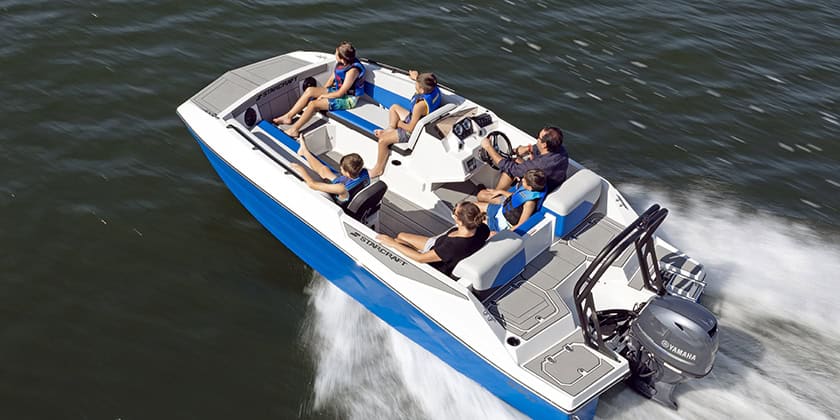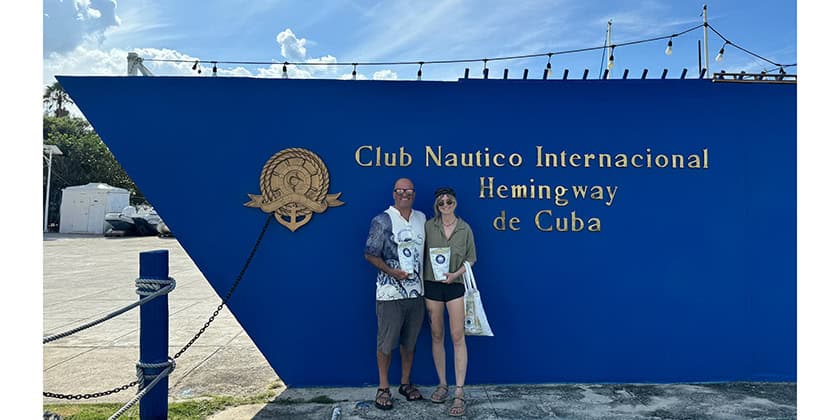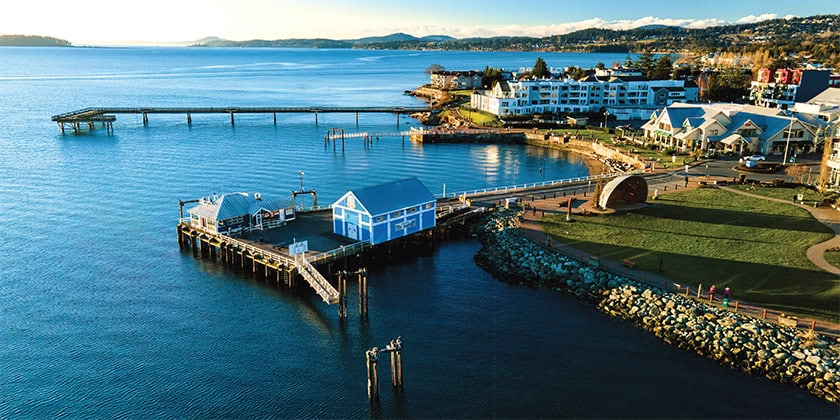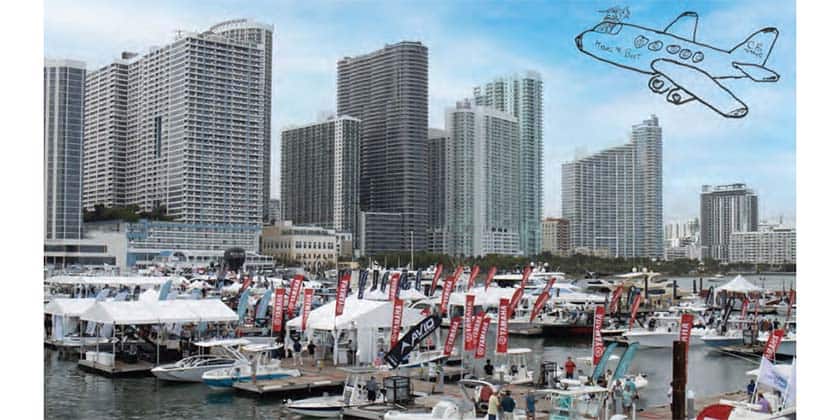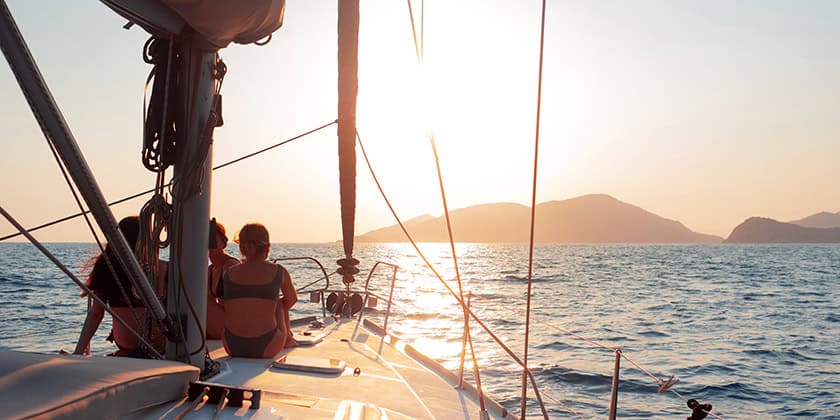Delphia 47
This Polish-built performance cruiser is an honest boat that’s comfortable, easy to sail and an impressive performer.
The sky was overcast, the breeze was steady at 10 knots, and the gunmetal-grey seas were flat during my test sail of the Delphia 47. But after countless boat tests I’ve conducted in similar conditions off Toronto, or Annapolis, Maryland, or Newport, Rhode Island, this one was different: we were sailing on the Baltic Sea, off the Polish city of Gdansk.
Poland may not be the first country that comes to mind when you think of sailboat-building traditions, and Delphia Yachts may not be a household name in North America, but as I learned during a fact-finding/boat-testing trip in Poland, Delphia has a modern, high-volume production facility, and these Polish-built boats may just give better-known North American brands a run for their money.
 I say this after spending the better part of a day aboard the Delphia 47. Even before we left the dock, I liked what I saw. Its low coach roof, nearly plumb stem, sugar-scoop stern and full teak deck produce a pleasing, modern look. The cockpit layout is utilitarian, with copious storage lockers, and comfortable, thanks to seats that are more than six feet long and seatbacks that are tall enough to provide good back support. The dual wheels, walk-through transom, and decent-sized swim step made it easy to board the boat from the stern.
I say this after spending the better part of a day aboard the Delphia 47. Even before we left the dock, I liked what I saw. Its low coach roof, nearly plumb stem, sugar-scoop stern and full teak deck produce a pleasing, modern look. The cockpit layout is utilitarian, with copious storage lockers, and comfortable, thanks to seats that are more than six feet long and seatbacks that are tall enough to provide good back support. The dual wheels, walk-through transom, and decent-sized swim step made it easy to board the boat from the stern.
Other deck features that I liked included solid, oversized mooring cleats and chocks, the sturdy and attractive metal toe rail, wide side decks, and the fact that the fiberglass finish, even in hidden areas like the anchor well and storage lockers, was very well done. This attention to detail proved to be indicative of the overall construction quality of the boat.
Below, the fit of the joinery – furniture, solid wood doors and trim – was excellent, and the finish of the varnished mahogany woodwork, the light-coloured headliner, and the ample natural light from fixed and opening ports combined to  create a bright and airy living space.
create a bright and airy living space.
The only aspect of the interior layout that is a bit of a departure from layouts on most North American production boats is the “Euro-style” galley that runs opposite the saloon settee to port. It’s fitted with Corian countertops, a four-burner gimbaled stove and stainless-steel sinks, and it may have a bit more stowage and counter space than an L-shaped galley at the base of the companionway stairs. But it requires a bench seat to be situated at the saloon table near the centerline of the boat. This means that there is only one sea berth in the saloon, and it limits the brace points for cooks in the galley a bit.
That said, the saloon is a warm and comfortable space in which I’d have no trouble hanging out on a rainy afternoon on the hook or while off-watch on an offshore passage. I also appreciated the conventional, forward-facing nav station. It has a good-sized chart table, ample stowage space for nav tools and a comfortable seat.
 I tested the three-cabin/three-head version (a five-cabin/four-head layout is also available), and was particularly impressed with the forward cabin. It had good headroom, copious storage lockers, excellent ventilation through a large opening hatch and multiple opening ports, and a well-proportioned ensuite head with separate shower stall. The bunk is plenty wide enough for two at the head, but it does taper to a point at the foot. The berths in the aft cabins are larger than the forward cabin’s bunk, but since each aft cabin has an attached head, there’s not much storage room. The head on the starboard side opens up to the saloon and will be the one that is used while under way.
I tested the three-cabin/three-head version (a five-cabin/four-head layout is also available), and was particularly impressed with the forward cabin. It had good headroom, copious storage lockers, excellent ventilation through a large opening hatch and multiple opening ports, and a well-proportioned ensuite head with separate shower stall. The bunk is plenty wide enough for two at the head, but it does taper to a point at the foot. The berths in the aft cabins are larger than the forward cabin’s bunk, but since each aft cabin has an attached head, there’s not much storage room. The head on the starboard side opens up to the saloon and will be the one that is used while under way.
I couldn’t help but smile as we motored out of the marina, which was forested with a multitude of masts. While much of the former Communist country is landlocked, it’s obvious the Poles sure do love to sail.
Getting the in-mast-furling main and the roller-furling jib set couldn’t have been easier. I settled in behind the leeward wheel, and soon we were cutting a clean wake and gurgling along at more than 6.5 knots upwind. Not too shabby in 10  knots of breeze. The helm was well balanced and didn’t require lots of movement to keep the boat in the groove. Unlike some dual-helm boats that can feel stiff because of the extra friction of the second station, the steering on the 47 was butter-smooth. The sightlines from either wheel and the overall functionality of the helm stations were excellent.
knots of breeze. The helm was well balanced and didn’t require lots of movement to keep the boat in the groove. Unlike some dual-helm boats that can feel stiff because of the extra friction of the second station, the steering on the 47 was butter-smooth. The sightlines from either wheel and the overall functionality of the helm stations were excellent.
I also liked the way the sheets and other control lines led back to the cockpit. Each end of the double-ended mainsheet system leads to a self-tailing winch close to the helm. Add the self-tacking jib that can also be easily trimmed by the skipper, and it doesn’t get any more singlehander-friendly than that. Off the breeze, the non-overlapping jib provides a little less power than a bigger genoa, but boat speed still hovered around 7 knots, and I’m in no hurry to trade the utter ease of the self-tacker for the winch grinding needed to fly a bigger sail.
If we had had the time, I could have continued sailing across the Baltic to Sweden, but eventually we had to roll the sails  up, turn on the engine, and make our way back to the marina. Engine noise was at acceptable levels both in the cockpit and down below; boat speed topped out at 7.8 knots at 2,700 rpm. The boat spun on a dime and maneuvered well.
up, turn on the engine, and make our way back to the marina. Engine noise was at acceptable levels both in the cockpit and down below; boat speed topped out at 7.8 knots at 2,700 rpm. The boat spun on a dime and maneuvered well.
The Delphia 47 makes a good case for the fact that a boat need not be radical to be successful. The boatbuilders at Delphia seem to believe that most folks are just looking for an honest, comfortable, attractive, well-built boat that performs well. And that’s exactly what they’ve built.
Specifications
LOA 47’ 6” (14.48 m)
LWL 46’ 2” (14.07 m)
Beam 14’ 8” (4.48 m)
Draft 7’ 6”/6’ 4” (2.30/1.80 m)
Sail Area (100%) 1,011 sq ft (94 sq m)
Ballast 9,920 lb (4,500 kg)
Displacement 29,321 lb (13,300 kg)
Ballast/Displ .33
D/L 133
SA/D 17.01
Water Capacity 129 gal (490 L)
Fuel Capacity 66 gal (250 L)
Waste Capacity 50 gal (189 L)
Mast Height 66’ 2” ( 20.17 m)
Engine 53 hp Volvo Penta
Designer Andrzej Skrzat/Schnaase Interior Design
Price (sailaway) $390,000
Delphia Yachts/North Lakes Yachting
(905) 891-8207
www.northlakesyachting.com
By Bill Springer










